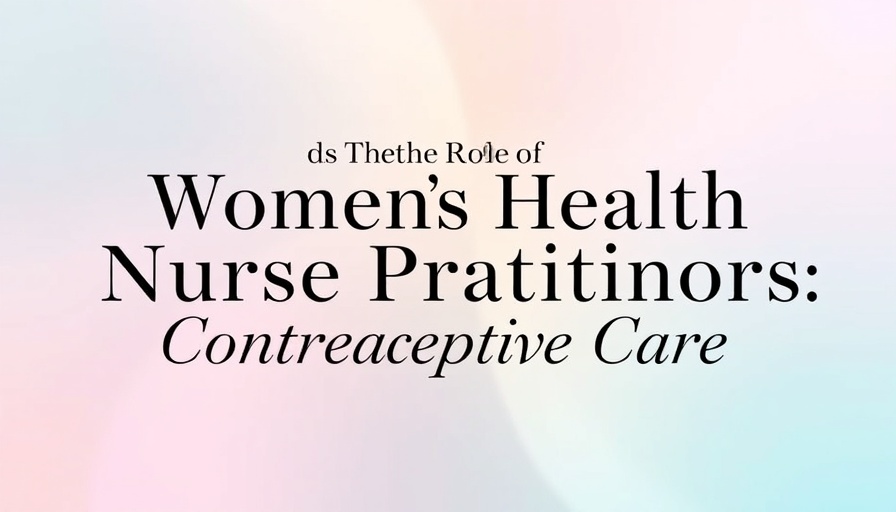
Empowering Women Through Knowledge: Understanding Contraceptive Options
In the modern healthcare landscape, women's health nurse practitioners play a crucial role in guiding individuals through their reproductive choices. A recent episode of WomenTalk featuring Beth Battaglino and Danielle Grimm sheds light on the significance of individualized contraceptive care.
In 'WomenTalk, The Role of Women’s Health Nurse Practitioners: Contraceptive Care', the discussion highlights the critical services provided by nurse practitioners, inspiring us to explore this important topic in detail.
The Expertise of Women's Health Nurse Practitioners
Women's health nurse practitioners are advanced practice registered nurses specializing in the healthcare needs of women throughout their lives. Danielle Grimm articulates the journey of becoming a women's health nurse practitioner with passion, emphasizing the importance of small interventions that can result in significant health impacts. These practitioners are especially crucial in providing guidance on contraceptive choices, especially in a world filled with options.
Why Personalized Contraceptive Care Matters
The evolving landscape of contraceptive options means that patients today have much more choice than ever before. This can feel overwhelming, but that's where women's health nurse practitioners shine. They not only keep women informed about new developments, such as the highly praised Opill, an over-the-counter pill that promises high effectiveness rates, but they also foster an environment where shared decision-making is paramount. This participatory approach encourages women to voice their concerns and preferences.
Barriers to Access and Prescription
Despite the advancement of contraceptive options, there are still hurdles that women face regarding access to these crucial resources. Danielle highlighted systemic issues such as insurance limitations and costs that can prevent women from accessing the contraceptive options that would work best for them. Stories of patients encountering significant out-of-pocket costs serve as a reminder of the work that remains to ensure equitable access to comprehensive healthcare.
Empowering Yourself Before Your Appointment
Preparing for a visit to a women's health nurse practitioner can greatly enhance your experience and ensure that your needs are met. Danielle suggests taking stock of your health and lifestyle, defining what you want from a contraceptive method, be it pregnancy prevention, menstrual control, or hormonal stabilization. The more clarity you have about your personal health goals and preferences, the better you can communicate with your healthcare provider.
Building a Trusting Relationship with Your Provider
This enhanced preparedness allows both the nurse practitioner and the patient to engage in meaningful conversations. It’s important to remember that the process is collaborative. If a contraceptive method doesn’t meet your expectations, maintaining open communication with your provider allows for adjustments and iterations until the right solution is found.
Women's health nurse practitioners are at the forefront of a healthcare revolution focused on personalized, empowered care. As we build upon advances in contraceptive options, understanding our choices through the lens of dedicated healthcare professionals can pave the way for better health outcomes.
Visit HealthyWomen.org for more insightful discussions and resources related to women’s health, and educate yourself on how to advocate for your needs in every aspect of your wellness journey.
 Add Row
Add Row  Add
Add 




Write A Comment